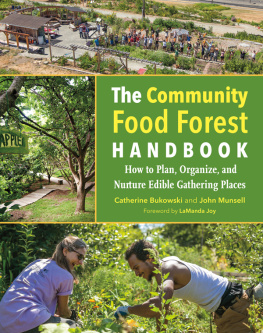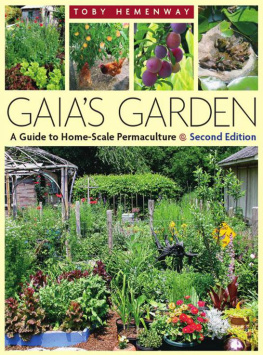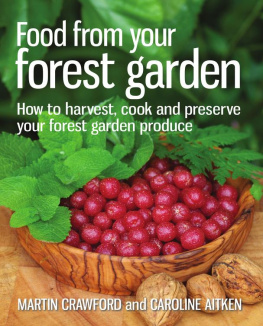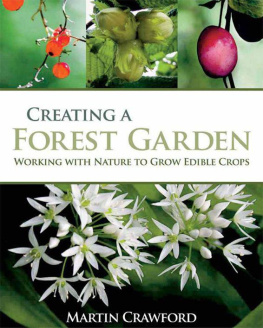Darrell Frey - The Food Forest Handbook: Design and Manage a Home-Scale Perennial Polyculture Garden
Here you can read online Darrell Frey - The Food Forest Handbook: Design and Manage a Home-Scale Perennial Polyculture Garden full text of the book (entire story) in english for free. Download pdf and epub, get meaning, cover and reviews about this ebook. year: 2017, publisher: New Society Publishers, genre: Children. Description of the work, (preface) as well as reviews are available. Best literature library LitArk.com created for fans of good reading and offers a wide selection of genres:
Romance novel
Science fiction
Adventure
Detective
Science
History
Home and family
Prose
Art
Politics
Computer
Non-fiction
Religion
Business
Children
Humor
Choose a favorite category and find really read worthwhile books. Enjoy immersion in the world of imagination, feel the emotions of the characters or learn something new for yourself, make an fascinating discovery.
- Book:The Food Forest Handbook: Design and Manage a Home-Scale Perennial Polyculture Garden
- Author:
- Publisher:New Society Publishers
- Genre:
- Year:2017
- Rating:3 / 5
- Favourites:Add to favourites
- Your mark:
The Food Forest Handbook: Design and Manage a Home-Scale Perennial Polyculture Garden: summary, description and annotation
We offer to read an annotation, description, summary or preface (depends on what the author of the book "The Food Forest Handbook: Design and Manage a Home-Scale Perennial Polyculture Garden" wrote himself). If you haven't found the necessary information about the book — write in the comments, we will try to find it.
Create abundance through this unique approach to low-maintenance, high-yield, sustainable food production
A food forest is a productive landscape developed around a mix of trees and perennials. Rooted in permaculture principles, this integrated approach to gardening incorporates a variety of plants such as fruit and nut trees, shrubs, vines, and perennial herbs and vegetables. Food forests can help increase biodiversity, protect valuable habitat for beneficial insects, and promote food security and resilience, all while providing an abundant harvest.
The Food Forest Handbook is a practical manual for the design and management of a home-scale perennial polyculture garden. Simple, straightforward instructions guide the reader through:
Getting started - site assessment and planning Tending the forest garden maintaining soil health, succession planning, , mulching, pruning and more The fruits of your labor crop profiles, harvest, storage, nutrition and recipes.
This timely book makes the concept of food forests accessible to everyone. Focusing on the potential of perennial polyculture to enhance local food systems, The Food Forest Handbook shows the reader how to mix and match plants in unique combinations to establish bountiful landscapes and create genuine self-reliance in years to come.
Darrell Frey is the owner and manager of Three Sisters Farm, a five-acre permaculture farm, solar greenhouse and market garden located in Western Pennsylvania. He has been permaculture teacher for thirty years, and is the author of Bioshelter Market Garden: A Permaculture Farm .
Michelle Czolba is co-owner of Pittsburgh Permaculture and co-founded the Hazelwood Food Forest. She has extensive experience in the design and maintenance of perennial polyculture.
Darrell Frey: author's other books
Who wrote The Food Forest Handbook: Design and Manage a Home-Scale Perennial Polyculture Garden? Find out the surname, the name of the author of the book and a list of all author's works by series.













